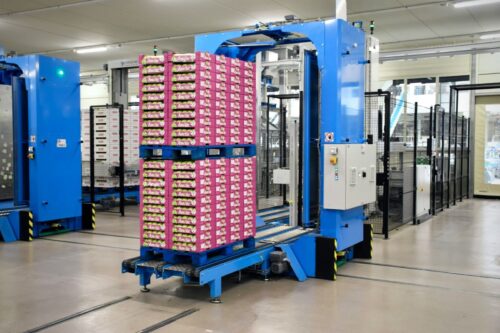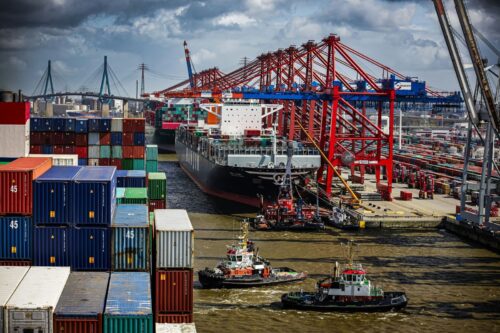Backward Integration: Definition, Implementation Process, and Competitive Advantages
In a competitive business world where efficiency and dominance are paramount, backward integration emerges as a strategic linchpin for companies aiming to fortify their market position.
This method involves businesses taking command of their supply chain, particularly by securing the production of raw materials. This strategic move elevates profit margins and solidifies a competitive edge in a bustling market.
While exploring the nuances of backward integration, we’ll uncover how this approach not only reshapes industries by ensuring supply chain reliability and cost-effectiveness but also fosters innovation and sustainability.
By providing a comprehensive analysis, this discussion sheds light on the multifaceted benefits and strategic implementation of backward integration, illustrating its critical role in enhancing operational efficiency and market responsiveness.
What is Backward Integration as a Strategy?

Backward integration is a strategic approach that allows companies to gain control over their supply chain by acquiring or establishing operations that supply raw materials or intermediate goods for their products.
This vertical integration strategy enhances a company’s autonomy over its production process, from sourcing raw materials to manufacturing the final product.
For example, a manufacturing plant might buy a supplier of critical components to ensure a steady supply and reduce costs. This move secures a more reliable supply chain and can lead to cost savings and improved efficiency by eliminating the intermediary.
In practice, backward integration affects industries by giving companies greater control over their value chain. Consider a retail supplier that chooses to acquire a wheat farm; this ensures a constant wheat supply for its products and allows for better quality control and lower costs.
This integration can be particularly advantageous in industries where the supply of raw materials is critical to the production process, offering a clear path to achieving complete backward integration.
Backward Integration Implementation Process
The backward integration process is a strategic maneuver where companies acquire control of their supply chain by acquiring or merging with suppliers of raw materials or components necessary for production. This approach secures a steady supply of essential inputs and aims at cost savings and improved efficiency.
A classic backward integration example is Apple‘s shift from Intel to its own M1 chips for better control over its production process, which showcases how large companies leverage internal capabilities to reduce reliance on external suppliers, ensuring better control and lower costs.
While capital-intensive, this approach reflects a deep dive into the entire supply chain, showcasing how large companies can leverage backward integration to fortify their business model and secure a competitive edge in the market.
Competitive Advantage of Backward Integration
Backward integration offers a strategic edge by allowing companies to control their supply chain, from raw materials to finished products. Combined with forward integration, it forms a comprehensive vertical integration strategy, strengthening a company’s hold over production and distribution.
Here are some of the key benefits that companies enjoy when they implement backward integration:
Cost Advantages
By acquiring suppliers or producing raw materials in-house, companies can significantly reduce transportation costs and mark-ups charged by intermediaries. For instance, a manufacturer developing a raw material supplier can streamline operations, leading to direct cost savings and more competitive pricing for the end consumer.
Better Quality Control
Gaining control over the supply of raw materials allows companies to ensure higher quality standards across their products. An example is a food manufacturer owning farms to guarantee the quality of ingredients, directly impacting the final product’s quality and safety.
Competitive Edge
Backward integration can create significant barriers for new entrants and give companies a unique position in the market. For example, a technology firm acquiring a supplier of rare components can secure exclusive access to essential parts, limiting competitors’ ability to produce comparable products and increasing its market share.
Substantial Disadvantages of Backward Integration
While backward integration offers numerous benefits, it has its drawbacks. These disadvantages can impact a company’s financial health and innovation ability, especially compared to strategies like forward integration or broader vertical integration efforts.
High Investment Cost
Implementing a backward integration strategy often requires large sums of capital. Companies must be prepared to invest heavily, whether acquiring suppliers or establishing new production facilities.
For example, a retail chain deciding to manufacture its products might face significant upfront costs in setting up a manufacturing plant, purchasing equipment, and hiring skilled labor. It may need to take on considerable debt to achieve backward integration.
Potential Risk of Slacking Innovation
A company risks becoming complacent when it secures its supply chain through backward integration. Without external competition to push for improvements, innovation may slow down.
A notable instance is when a technology firm acquires a supplier of essential components and then relies solely on existing technologies rather than seeking or developing new solutions, potentially falling behind more innovative competitors in the same industry.
Relationship of Backward Integration vs. Vertical Integration
Backward integration and vertical integration are closely related concepts in business strategy. Each plays a crucial role in how a company controls its supply chain and secures its market position. Vertical integration encompasses backward and forward integration, offering a comprehensive approach to supply chain management.
Backward integration focuses on acquiring control over the production of raw materials or components needed for manufacturing the final product, thereby ensuring more control and reduced costs.
An example is a car manufacturer that acquires a steel supplier to secure a steady supply of essential materials, embodying the essence of backward vertical integration.
On the other hand, vertical integration as a whole might see a company not only taking over its suppliers but also extending its reach to the end of the supply chain by acquiring retail locations or distribution networks.
A prime example is a book publisher that purchases a paper mill (backward integration) and a chain of bookstores (forward integration), thereby controlling the entire supply chain from production to distribution.
Components of Backward Integration vs. Forward Integration
Backward and forward integration are strategic approaches within vertical integration, each with distinct components.
Backward integration involves a company acquiring or establishing control over its suppliers to secure raw materials needed for production, aiming to reduce costs and enhance supply chain efficiency. An example is a manufacturer that purchases a wheat processor to ensure a consistent supply of its food products.
Conversely, forward integration sees a company expanding towards the end consumer, such as a manufacturer opening retail stores to sell its finished product directly, reducing markups and increasing market share.
Examples of Successful Backward Integration Industries

Several industries have demonstrated the effectiveness of backward integration, making it a cornerstone of their business strategy. In the automotive industry, companies like Tesla have moved toward producing essential components in-house, such as lithium for batteries, to ensure supply and reduce costs.
Similarly, Apple’s decision to develop its M1 chips and move away from reliance on Intel showcases backward integration in the technology sector by controlling critical parts of its supply chain.
Further, in the food industry, a notable example is Nestlé’s approach to securing its cocoa supply chain. By acquiring cocoa farms, Nestlé ensures a steady supply of high-quality cocoa for its chocolate products, directly influencing cost and product quality.
These examples highlight how companies across various sectors, from food to construction and clothing, seek backward integration to gain more control over their raw materials and production processes, ensure quality, reduce costs, and secure a competitive edge in their respective industries.
FAQs
1. What is an example of a backward integration company?
An example is Apple, which manufactures its chips for devices, ensuring control over supply and enhancing product integration.
2. What is backward and forward integration?
Backward integration involves a company acquiring suppliers, while forward integration means acquiring distribution channels or retailers.
3. Is Ikea backward integration?
Ikea practices backward integration by owning forests and manufacturing facilities to control its raw material supply and production.
4. What are the risks of backward integration?
Risks include significant initial investment, the potential for reduced flexibility, and the challenge of managing more complex operations.
Gain Strategic Edge With Backward Integration
Companies that pursue backward integration have a strategic advantage because it allows them to gain direct control over their supply chain, from raw materials to production.
This approach enables businesses to reduce costs and mark-ups, strengthening their core competencies and operational efficiency. However, companies must weigh the potential for added debt and the challenges of managing expanded operations.
Successfully integrating backward can significantly enhance a company’s competitive position in the market, making it a powerful strategy for growth and sustainability.
